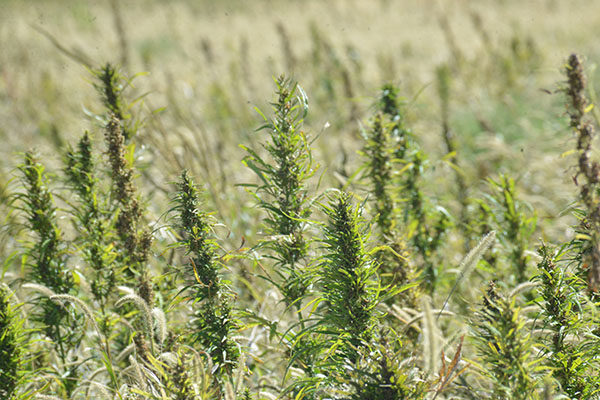Source: cannabisnow.com

Shaping the new hemp economy in America.
In 2012, Ryan Loflin, 41, had a successful business building designer homes from reclaimed barnwood. But in 2013, Loflin defied federal law and converted 55 acres of alfalfa on his family farm in southeastern Colorado into the first hemp field grown in the United States since cannabis prohibition began over 70 years ago.
“It’s all about job creation, that’s the whole point of this industry,” says Loflin, “To get small town America back to having jobs that are profitable. The end result in rural America is going to be pretty outstanding. It has so many uses… everything except glass can be made from hemp, it’s a special crop.”
Loflin had been mulling the venture for years, ever since Canada re-legalized the cultivation of the crop in 1998. According to the Canadian Hemp Trade Alliance, farmers in the country planted 6,000 acres of hemp in 1998 and will plant an estimated 100,000 acres this year. The CHTA estimates the gross value of the crops to range between $30-$34 million, or between $990-$1,100 per acre. In comparison, American corn farmers made just under $1,000 an acre in 2013 (government subsidies included), making hemp far more profitable.
“It was just the right time, we moved ahead as we realized everything was falling in place,” says Loflin.
His 2013 crop was largely exploratory, but it sparked buzz in farming communities across the country as well as in major retail grocery chains and companies using hemp as a production base.
“I have had several farmers from all over, from Iowa, Texas, Kentucky and North Carolina — all across the country people have contacted me about growing hemp, especially here in Colorado. I have several people who are going to plant here next year, it’s pretty exciting.”
The organic grocery chain Whole Foods has expressed strong interest in Loflin’s endeavor. Whole Foods is looking for agricultural hemp meal to feed chickens a healthy organic diet, driving up the quality and therefore the value of the poultry products it sells.
“[Whole Foods] is a global industry, it’s a pretty big deal,” Loflin says.
Technically, Loflin is breaking federal law, yet to date no government or law enforcement agency has arrested him or pressed charges. The federal government would be hard pressed for a good reason to prosecute Loflin; hemp has an almost non-existent presence of THC, the cannabinoid responsible for creating the “high” associated with smoked marijuana, meaning it isn’t worth using recreationally. Coupled with the fact that other countries are profiting heavily off the crop, a high-profile raid, asset seizure, arrest and prosecution of this Midwestern farm full of financial promise would be widely unpopular with all Americans, regardless of political affiliation.
And isn’t hemp promising! Here is a short list of what can be made from hemp: cloths, textiles and fabrics, paper and paper goods, compostable food packaging, rope and twine, paints and varnishes, fuel and energy, plastics, medicines, foods and nutritional supplements and home building materials.
Hemp is also going to become one of the most valuable crops in the 21st century as the planet continues to heat up, snowballing the effects of world climate change. Demand for industrial hemp is likely to spike astronomically. Hemp plants naturally condition and clean soil, they absorb CO2 from the atmosphere and products made from them are ecologically sustainable and easily integrated into existing manufacturing and markets.
The world is still emerging from the economic collapse of 2008 and it’s becoming more and more apparent that Mother Earth is going to have the heaviest hand in shaping the economics of the modern era. Advocates for the legalization of marijuana already know the potential profits from legalized marijuana and taxpayer money that is saved by not prosecuting its possession and use. Hemp may just be the guiding light out of cannabis prohibition, world recession and the impending doom of global climate change.
You can support the end of hemp prohibition through the voting ballot and your dollar. Buying hemp products, which are legal for sale in the United States via import, increases domestic demand and incentivizes our policymakers to get on the right side of history and science.
Today, China is the largest producer of hemp in the world, generating 50 percent of the global supply. China’s hemp crop is largely used to create textiles for clothing. Canadian crops are mainly utilized for food consumption. No country on the planet has grown hemp on a massive industrial scale to replace crude oil and plastics, the largest single polluting industry on the earth. Whatever country dared to undergo hemp for biofuel and plastics is sure to have the largest economic advantage in the new millennium.
So while Loflin’s crop this year was small, it holds so much more promise than alfalfa, corn or soybeans.
“This year wasn’t about making money at all,” says Loflin, “It was about getting it done.”
No comments:
Post a Comment